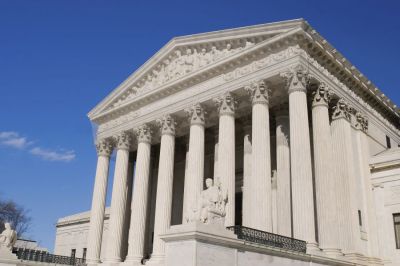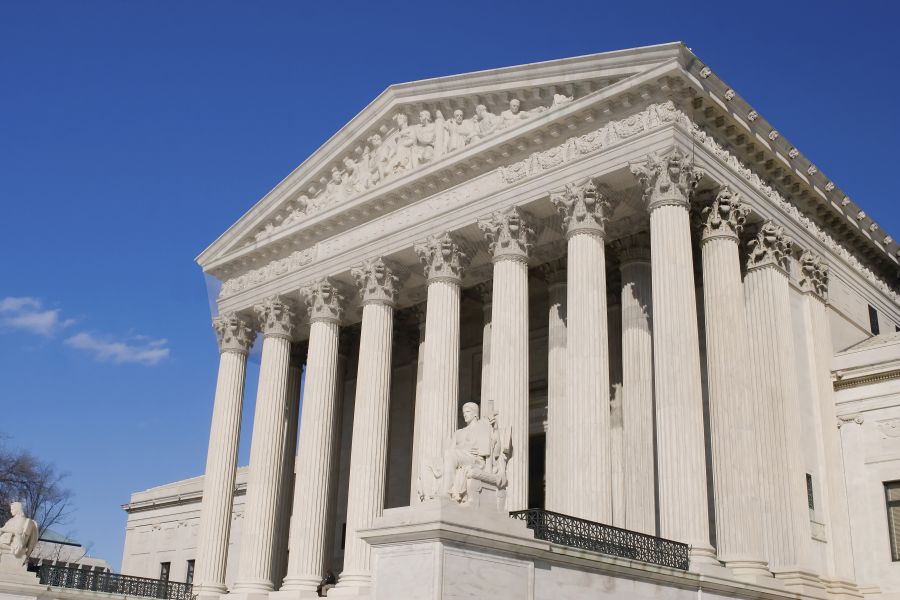The First Amendment future of debate over Roe v. Wade
First Five by the Freedom Forum Institute
Jun 30, 2022

GENE POLICINSKI
Senior Fellow for the First Amendment | Freedom Forum
Download Word doc here.
The First Amendment was not the focus for the U.S. Supreme Court’s decision to overturn Roe v. Wade.
But the five freedoms in the First Amendment have powered the nation’s long, divisive debate over the incredibly personal and societal issue of abortion – and may well be how we frame its future.
Abortion-rights and anti-abortion forces have been seen and heard, largely without government restraint, from hardline moral positions rooted in faith and conscience; to thousands of news media reports, commentaries and guest appearances; rallies and marches by all sides throughout the years; to massive lobbying campaigns targeting elected officials and publicity efforts targeting the rest of us.
In its 5-4 decision, the court deployed the First Amendment as a next step, as the issue now returns to individual states to set their own rules. Justice Samuel Alito’s opinion cited a 1992 decision in which the late Justice Antonin Scalia predicted “the permissibility of abortion, and the limitations upon it, are to be resolved like most important questions in our democracy: by citizens trying to persuade one another and then voting.”
In other words, the Supreme Court told us that the ultimate decision on legal abortions will come from us, collectively, using our First Amendment rights to speak and write to each other to advance our views and to assemble with people of like minds to ask for a “redress of grievances.”
The nation didn’t wait to take that instruction from the justices. As soon as the decision was announced, anti-abortion activists paused to celebrate, and opponents of reversing Roe took to the streets, the media and online forums to decry the court’s action. The newest place for the next generation to join the debate: TikTok, where according to The Washington Post, “Gen Z is harnessing political power by creating bite-size videos on the nation’s fastest-growing social media platform.”
Newscasts from outside the Supreme Court building in Washington, D.C., showed daily dueling groups of demonstrators on the sidewalks. Weekend news reports said marches and protests in support of Roe erupted in more than 100 cities and towns across the nation.
The First Amendment’s right to assembly shielded each side. Over the decades, the only limits the government could impose have been to set up physical boundaries on protests and establish rules of conduct for protestors outside clinics where abortions were performed.
As it happens, the right to protest stops at the court’s steps, under the theory that the justices’ legal decisions are not to be swayed by public sentiment.
Nor are all responses, which in recent days ranged from threats to justices and their families to graffiti defacing a Catholic Church in Reston, Virginia, protected by the First Amendment. The First Amendment is not a shield for violence, threats or intimidation.
Abortion certainly is not the first or only major issue to enrage, excite and galvanize us to use those core freedoms of religion, speech, press, assembly and petition – or to go beyond them.
Nearly 200 years ago, a mob killed newspaper editor Elijah Parish Lovejoy for supporting the end of slavery. For decades, women used their First Amendment rights to fight for the right to vote, facing violence like being force-fed during hunger strikes.
The nation still is embroiled in debating social justice issues around civil rights for people of color. In response to the Black Lives Matter protests over police killings of Black men, some states have enacted draconian laws aimed at stifling the First Amendment rights of speech, assembly and petition. Those laws ignore history. It was the pursuit of those very freedoms – the right to produce change by being heard in a free and open “marketplace of ideas” – that fueled the creation of our nation.
Again and again, Americans have used their First Amendment freedoms to make their case on issues of major social importance — sometimes going beyond their protections. There's also no guarantee any one position will succeed.
The First Amendment favors no side in the issue of abortion’s legality, or any other issue of public importance. Nor does it disfavor any view. It does protect from government penalty or censorship any engaged citizen willing to use information, education and participation to, as Scalia wrote, “persuade one another.”
Gene Policinski is the Freedom Forum senior fellow for the First Amendment. You can reach Policinski at gpolicinski@freedomforum.org.









